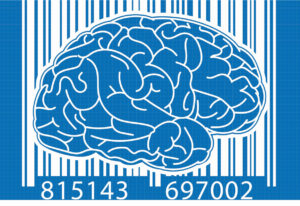Why do we choose for one product or and not for another? What stimuli or perceptions push us to choose a certain brand or service? What do the consumer’s decision-making processes look like? Neuromarketing provides answers to these and more questions. Neuromarketing is a discipline that studies purchasing or consumption behavior and customer decisions.
We have to go back to 2002 in order to find the origin of neuromarketing. This concept has been confirmed as key in the field of marketing, capable of transforming the digital and marketing strategies of companies and their decisions regarding certain campaigns and actions. Neuromarketing is not only the future of marketing, but also undoubtedly the present. And all brands must be prepared for it.
In 2002 Dr. Ale Smith won the Nobel prize of Economics. He was the one who came up with the term of Neuromarketing referring to the different research techniques of the brain mechanisms in the consumer’s mind in order to improve the marketing strategy. In other words, the importance of studying what our buyer persona – potential customer – thinks before choosing us or, on the contrary, discarding us.
In many books that are specialized in Neuromarketing, it is stated that companies such as Coca Cola, Levi-Strauss and Ford were among the first ones to trust in this new discipline. They wanted to get more and better results in their marketing campaigns and for that it was vital to “enter” the minds of those who buy. The first academic study on Neuromarketing was published in 2003: ‘Neural correlates of behavioral preference for culturally familiar drinks’, by Read Montague. The first international congress was held in 2004, at the Baylor Medical School in Houston. As a result of this event, the first companies that were specialized in the field began to be created in the USA, and from the USA to the whole world.

Keys of Neuromarketing that you must know
Neuromarketing is essential to design both the marketing strategies of brands, such as content strategy and social media, as well as any of the editorial calendars that are planned. Its influence on the marketing sector is irrefutable and for this reason it is necessary to know the following keys to neuromarketing:
The power of emotions. Whether or not a customer chooses a brand, a product or a service is empirically based on the emotions they produce. In other words, brands and companies need to stimulate their potential customers with powerful and intense emotions. This is when the brain wakes up and wants to take advantage and enjoy that experience. But beware, negative emotions could also enter here. And the user may want to protect and isolate himself from it, trying to avoid a brand with which he has had a bad experience and where he has “had a bad time” in some way.

Visual stimulation. The brain reacts quickly to it, so now the most important thing is audiovisual content: videos, gifs, images, etc. Not that written content is no longer important, far from it. But visual stimulation is more important when it comes to activating the consumer’s brain, which can be convinced through words. Other techniques such as illustrations or infographics are also on the rise, the perfect union between visuals and grammatical condensation, e.g. short, persuasive and forceful messages.
The importance of the tangible. Neuromarketing has reached an important conclusion and it is vital that brands take it into account. What is important is the tangible, which we can touch and enjoy, such as profits, money or return on investment. This is especially important for the brain.
Familiarity. Another key to Neuromarketing has to do with what is familiar to us and therefore pushes and influences the consumer more. Consumers look for familiar patterns before choosing one product or another. These familiarities can range from images, colors, messages or graphics.
The easier the better. The consumer’s brain wants to feed on simple things that are easy to process and interpret automatically. It is averse to complicated tasks that take both energy and time. As well as language (also visual) quickly and without difficulty.
Surprise the brain. We should not confuse the previous keys (familiarity and simplicity) with an intelligent stimulus for the brain, which also seeks surprises. It looks for unexpected words, surprising images, striking effects that surprise it and make it decide on a specific product.
The consumer experience. There is no doubt that a customer’s memory of a brand is reinforced, both positively and negatively, according to the customer’s experiences like the use of the mobile app, the quality of the product, web usability or the ease of purchase. These are aspects of neuromarketing that should not be overlooked.
Time factor. According to IFM Business School, the time factor is key in neuromarketing, since “the less time the consumer has to decide, the more options the brand has to make that decision irrational and influenceable and, therefore, end up buying”.
One thing we must bear in mind is that, according to different studies, it only takes us an average of 2.5 seconds to decide to make a purchase. And at that time, 80% is spent in our subconscious, which is really responsible for our irrational impulses. We buy through our eyes, but also through smell, memory, imagination, touch and impact. This is something that every brand must take into account to reach its end customer.
